The week at a glance
- Yelkouan Shearwaters in Cornwall
- Madeiran Storm-petrel in Co. Cork
- White-tailed Lapwing in Kent
- River Warbler in Norfolk
The month of quality seabirds continues, with two megas reported, one with some regularity! The trouble with seabirds, though, is that they rarely hang around long enough to be well photographed, just zipping past remote headlands in gale-force winds never to be seen again. So last week it was Fea's Petrel and possible Bulwer's Petrel, and a couple of weeks ago it was a 'dark-rumped' petrel (was it a Swinhoe's?). Could it get any better? Well yes!
The daily observations by the SeaWatch SW team started this week at Gwennap Head, Porthgwarra (Cornwall), ensuring excellent coverage and no doubt a run of notable records. With a couple of possible Yelkouan Shearwaters last week, the pattern continued, with one 'Yelkouan-type' on 17th and another possible on 18th. Independent seawatchers also recorded another possible past Porthgwarra on 15th. Interestingly, though, some seabirds will take big loops around this part of the coast, so some of these records may in fact relate to the same bird. Other 'possibles' were recorded past Bass Point (Cornwall) on 16th and on the pelagic off the Isles of Scilly on 19th. There is still just a single accepted record of Yelkouan Shearwater, past Berry Head (Dorset) in July 2008, though this still awaits official acceptance to the British List, currently being considered by BOURC. There are other records still in circulation, though these won't include many of the claims of the past (such as from Flamborough Head (East Yorkshire) in the 1990s), many of which were never submitted to BBRC. The difficulty of proving a confident identification will always make it hard for records to be accepted, but as differences from, for example, 'Menorcan' Balearic Shearwater become better known, the situation may will become clearer. A summary of the ID features of Yelkouan Shearwater is available to webzine subscribers here.
Even rarer was the Madeiran Storm-petrel that passed Galley Head (Co. Cork) on 18th, independently seen by two lucky observers — an account of an amazing day's seawatching can be found here. The only previous records, none of which have yet been accepted, were from the pelagic off the Isles of Scilly in July 2007 and past Pendeen (Cornwall) in September 2007 and September 2009.
On the lapwing front, the touring White-tailed Lapwing decided to stay a while at Dungeness (Kent), gracing the ARC Pit all week with an eclipse male Garganey. It spent most of its time, rather unusually, eating Medicinal Leeches, which are found in nationally important numbers at Dungeness and are a key part of the site's SSSI designation.
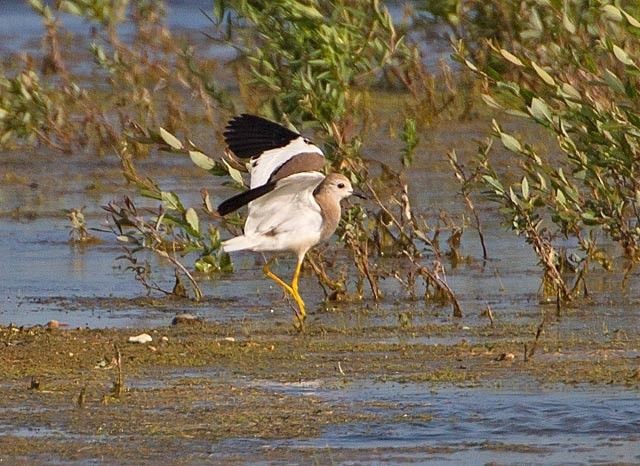
White-tailed Lapwing, Dungeness RSPB, Kent (Photo: Chris Upson)

White-tailed Lapwing and Garganey, Dungeness, Kent (Photo: Mark Pearson)
Potentially of more interest (but only in recent months/years at least, dare I say?!) was the report of a probable Sociable Lapwing flushed from a field at Edmondbyers (Durham) on 19th. Initially seen from a car late in the evening, split-second views all suggested Sociable Lapwing, but after it appeared to join a Lapwing flock it disappeared into the foul weather. Interestingly, apart from a bird on St Mary's (Isles of Scilly) in 2008, the last was at Rainham Marsh (London) in 2005, recently, and briefly, home to the White-tailed Lapwing now at Dungeness.
In Norfolk, the male River Warbler continued to sing at Thorpe, though became harder to pin down. Access was less frequent as well, and it was last reported on 16th.
With most ducks moulting at the moment, they are more likely to stay put. The female Ferruginous Duck was at Minsmere (Suffolk) all week and the two drake Ring-necked Ducks — thanks to John Nadin who has confirmed these are two different birds — were at Angle Park (Fife) to 17th and Loch Gelly (Fife) on 16th. The hybrid drake Pochard × Tufted Duck also remained at Stoke Newington Reservoirs (London), reported on 16th, and another hybrid resembling a Lesser Scaup was at Loch Leven (Perth & Kinross) during the week.

Ring-necked Duck, Angle Park GP, Fife (Photo: John Nadin)
The first-summer drake King Eider showed well on the rocks all week at Filey Brigg (North Yorkshire) and there was also another first-summer drake at Burra Bridge, Trondra (Shetland) on 17th. After a brief absence, one of the drake Surf Scoters reappeared, reported at Blackdog (Aberdeenshire) on 16th, with two there on 20th and presumably the same two off Murcar Golf Course (Aberdeenshire) on 18th.

King Eider, Filey, North Yorkshire (Photo: Dave Mansell)
Inland Common Scoters continued to be regular, with a peak count of 60+ on Wayoh Reservoir (Lancashire) on 21st. Others were at Nosterfield (North Yorkshire), Broadstone Reservoir (South Yorkshire), Ogston Reservoir (Derbyshire), Hollingworth Lake (Gtr Manchester), Barrowford Reservoir (Lancashire), and nine at Carsington Water (Derbyshire) on 18th. After a drake in June, Cotswold Water Park (Wiltshire) hosted a redhead Smew on 18th.
The only large shearwaters of the week were a Cory's past Spurn (East Yorkshire) on 17th that landed on the sea, and presumably the same was then reported past Sunk Island, heading up the Humber, the next day. Another landed on the sea off Skinningrove (Cleveland) on 20th. Up to six Sootys were recorded past Porthgwarra (Cornwall) during the week, with other Cornish birds past Pendeen on 17th and Bass Point on 16th. In Ireland, 12 went past Galley Head (Co. Cork) on 18th with two the next day.
As expected, Balearic Shearwaters were more regular past many watchpoints. We won't list them all, but peak site counts were 88 past the SeaWatch SW watchpoint at Porthgwarra (Cornwall) on 16th, 22 past Start Point (Devon) on 15th, 11 past Portland (Dorset) on 15th, eight past Bass Point (Cornwall) on 16th and seven past Galley Head (Co. Cork) on 18th. Away from the south coast, singles were seen past Brownstown Head (Co. Waterford) on 18th and Porth Ysgaden (Gwynedd) on 20th, with two from a boat off Port Erin (Isle of Man) on 21st and five past St Catherine's Breakwater (Jersey) on 21st. Manx Shearwaters were also moving, with around 5,000 per hour past Troon (Ayr) on 16th.

Balearic Shearwater, Berry Head, Devon (Photo: Joe Ray)
Other seabirds included two Wilson's Storm-petrels on the pelagic off the Isles of Scilly on 17th, 10 past Galley Head (Co. Cork) on 18th and three off Cape Clear (Co. Cork) on 19th. More unusual was a Gannet at Belhus Woods Country Park (Essex) on 17th, a good 15 miles inland.
The only Cattle Egrets reported were at Noirmont Point (Jersey) on 19th, and the Glossy Ibis was again reported at Tacumshin (Co. Wexford) on 15th and 18th.

Glossy Ibis, Tacumshin, Wexford (Photo: Paul & Andrea Kelly)
The Little Bitterns were seen on and off all week at Walton Heath (Somerset), with the female seemingly most frequent now. It never ceases to amaze me how irresponsible some birders can be, though. In the early evening of 16th, a birder was seen actually IN the reedbed close to the presumed nest site. When challenged, they returned a volley of abuse before hastily leaving. Maybe we at BirdGuides just need to be more specific in our site guidelines, and next time it might have to be: "Elegant Tern, Cemlyn Bay. Will visiting birders please not wade over to the island, trample nests of other terns or stand obliviously next to a pair of alarming Ringed Plovers on the beach."

Little Bittern, Ham Wall RSPB, Somerset & Bristol (Photo: Carl Bovis)
The Purple Herons remained more undisturbed at Dungeness (Kent), sharing the marsh with the Great White Egret all week. The French colour-ringed egret remained at Shapwick Heath (Somerset) to 17th with one at Clumber Park (Nottinghamshire) on 17th–21st. A 'possible' from the Kincardine Bridge (Forth) on 20th–21st was later reidentified from photos as a Little Egret.

Great White Egret, Dungeness, Kent (Photo: Marc Heath)
Spoonbills seemed less widespread, with peak counts of 11 at Cley (Norfolk), six at Keyhaven Marshes (Hampshire), four at Gibraltar Point (Lincolnshire) and threes at Brownsea Island (Dorset) and on the Ythan estuary (Aberdeenshire). In Ireland, two were at Ringarogy Island (Co. Cork) on 15th, with two at Dungarvan (Co. Waterford) on 18th.
Black Kites were reported north over Burton Marsh (Cheshire) on 17th and over the M25 at Godstone (Surrey) on 20th.
A rather early (failed breeding or early fledged?) Spotted Crake was at Blacktoft Sands (East Yorkshire) on the afternoon of 20th. Equally unusual was the colour-ringed Stone Curlew at Beeley Moor (Derbyshire) on 17th. This was only the seventh record for the county, but unfortunately only a single red colour ring could be seen as the bird sat in heather. The last county record was also colour-ringed, a bird seen in August and September 1987, later sadly found dead (possibly from heavy-metal poisoning); it was originally ringed as a chick in the Suffolk Breckland just three months previously. Another migrant was at Rye Harbour (East Sussex) on 20th.
There were a good variety of scarce waders, with Pectoral Sandpipers at Welney (Norfolk) all week and the bird at Sandwich (Kent) that remained to 18th. A Baird's Sandpiper was reported at Blanket Nook, Lough Swilly (Co. Donegal) on 17th and two White-rumped Sandpipers were at Breydon Water (Norfolk) on 18th, with one present the next day. The Buff-breasted Sandpiper remained at Titchwell (Norfolk) to 17th, with a late report on 19th. The Terek Sandpiper showed at Blennerville (Co. Kerry) to the end of the week, though more fleeting was the very spotty, summer-plumaged Spotted Sandpiper at Dunster Beach (Somerset) on 17th.

Buff-breasted Sandpiper, Titchwell RSPB, Norfolk (Photo: Adi Sheppard)

Spotted Sandpiper, Dunster Beach, Somerset & Bristol (Photo: Gary Thoburn)
Aside from the breeding birds on Lewis (Outer Hebrides), two Red-necked Phalaropes flew past Rumps Point (Cornwall) on 16th and three Grey Phalaropes were seen on the pelagic off the Isles of Scilly on 19th.
The only skuas of note were an adult Long-tailed past Start Point (Dorset) on 15th and a first-summer past Galley Head (Co. Cork) on 18th. Glaucous Gulls remained, including a second-summer at Nimmo's Pier (Co. Galway) on 15th–18th, a first-summer at Pilmore (Co. Cork) on 17th and one past Cley (Norfolk) on 17th. Caspian Gulls were reported in small numbers at various sites including Little Marlow Pits (Buckinghamshire), Frampton Marsh (Lincolnshire), Foremark Reservoir (Derbyshire), Cley (Norfolk), King George VI Reservoir (Surrey), Dogsthorpe Tip (Cambridgeshire) and two at Blythburgh (Suffolk). The possible first-summer Baltic Gull from last week turned into a probable this week, seen again at Blythburgh on 17th. The pig fields here also held up to 33 Yellow-legged Gulls on 21st, with other peak counts of 14 at Lower Test Marshes (Hampshire) on 18th, 13 at Rainham Marshes (London) on 16th, 13 at Dungeness (Kent) on 16th and nine at Stubber's Green (West Midlands) on 20th.

Caspian Gull, Dogsthorpe Tip, Cambridgeshire (Photo: Josh Jones)
From across the pond, the second-summer Laughing Gull was at Ballycastle (Co. Antrim) until 18th, and an adult Franklin's Gull was an excellent find at Chasewater (Staffordshire), present 15th–21st. This was the second record for the county, following a bird at Blithfield Reservoir in August 2006.
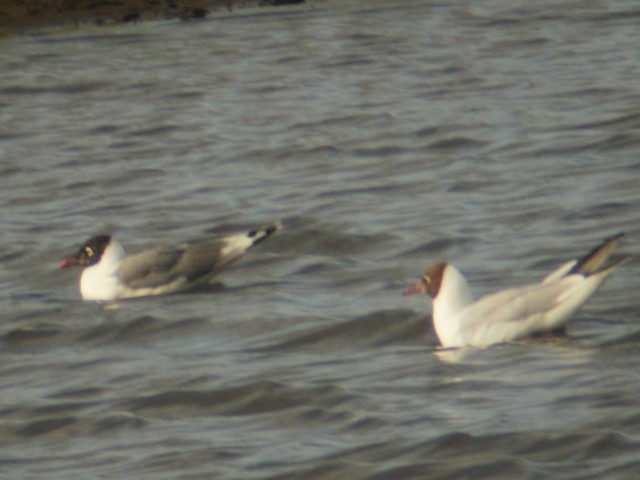
Franklin's Gull, Chasewater, Staffordshire (Photo: Martin Grant)
A Caspian Tern heading west past Henham Park (Suffolk) on 17th was only the second of the year, following the wandering Scottish bird in June.
There were two records of Alpine Swift, over the quarry at Berry Head (Devon) on 15th, then flying out to sea, and another at Summer Leys (Northamptonshire) on 17th with 20 Swifts.
The first Red-backed Shrikes for a while were a male on Sanday (Orkney) on 15th and one on Papa Westray (Orkney) on 19th, and also in Scotland a female Common Rosefinch was on the Isle of May (Fife) on 15th.
As an aside, insect news we reported during the week included at least two Southern Emerald Damselflies at Cliffe Marsh (Kent) on 17th, a Marsh Dagger moth at Pagham Harbour (West Sussex) on 20th and a male Red-veined Darter at Felbrigg Hall (Norfolk) on 21st.
Photo of the Week

Common Kestrel, undisclosed site, Cumbria (Photo:
Roy)
In the early days of bird photography, equipment was heavy, film speeds were slow and even basic facilities such as autoexposure and autofocus didn't exist. As a result, chasing after birds in the field was impractical and the main technique used was to set up a camera on a tripod, preferably in a hide, and wait for the bird to come to a predictable spot such as its nest or a favourite perch. Although this technique required considerable patience, it had the advantage that the set-up of the shot could be controlled and numerous attempts at timing the shot could be made. To some extent this technique has fallen from favour, which is a pity because, with the fast shutter speeds and burst rates of modern cameras, it makes perfectly timed and composed shots much more achievable (the usual provisos about disturbance obviously apply). This week, Roy Rimmer submitted a superb example featuring a Common Kestrel alighting with prey. With a beautifully posed and lit subject and just enough stone wall and background visible to convey a sense of place, Roy has shown the difference between capturing a great image in the field and creating one.
Other notable photos
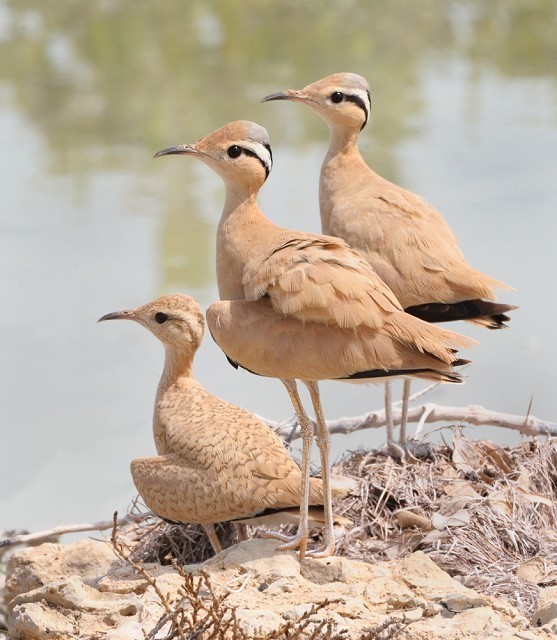
Cream-coloured Courser, Qatar (Photo:
Dileep Kumar)
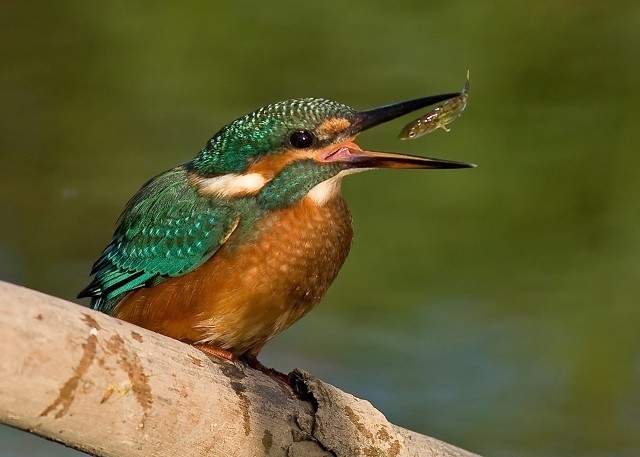
Common Kingfisher, Topsham, Devon (Photo:
Charlie Fleming)

Peregrine Falcon, undisclosed site, Powys (Photo:
Mike Warburton)

Swallow, Beadnell Bay, Northumberland (Photo:
Chris Grady)

Puffin, Sumburgh, Mainland, Shetland (Photo:
Paul Hillion)

Short-eared Owl, undisclosed site, South Yorkshire (Photo: anon)

Little Owl, Qatar (Photo:
John A Thompson)

Barn Owl, Whitstable, Kent (Photo:
Mike Gould)
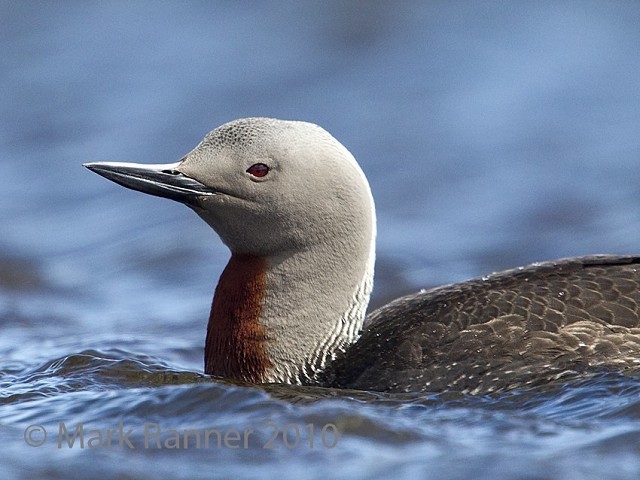
Red-throated Diver, Funzie, Fetlar, Shetland (Photo:
Mark Ranner)

Great Skua, Levenwick, Mainland, Shetland (Photo:
James Wood)

Red-necked Phalarope, undisclosed site, Offaly (Photo:
Ronan McLaughlin)

Sandwich Tern, Balcomie, Fife (Photo:
John Anderson)

Bearded Tit, Cley Marshes NWT, Norfolk (Photo:
David Whistlecraft)

Dunlin, Smeale, Isle of Man (Photo:
Chris Wormwell)

Meadow Pipit, undisclosed site, Gwent (Photo:
Tom Melton)

Corn Bunting, Poland (Photo:
Artur)

Avocets and Stoat, Cley Marshes NWT, Norfolk (Photo:
Rob Sewell)

Barn Owl, Old Hall Marshes RSPB, Essex (Composite photo:
Pixellence)

